This article mainly talks about Volvo diesel engine starting, operation and shutdown.
Starting
Make it a habit of giving the engine and engine room a visual check before starting. This will help you to discover quickly if anything abnormal has happened, or is about to happen.
Also check that instruments and warning displays show normal values after you have started the engine.
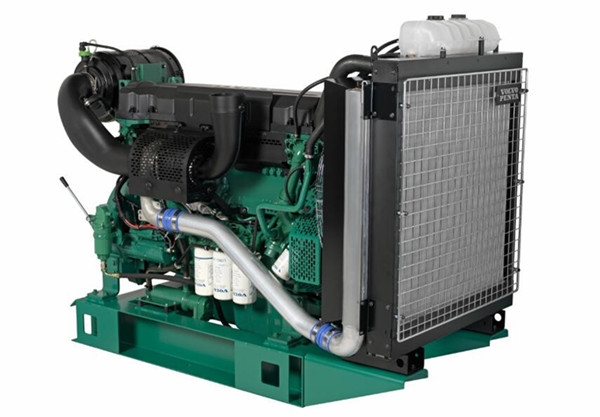
WARNING!
Never use start spray or similar agents to start an engine. This may cause an explosion in the inlet manifold. Danger of personal injury.
Before Starting
• Check that the oil level is between the MIN and MAX marks. Refer to the “Maintenance, lubrication system” chapter.
• Open the fuel taps.
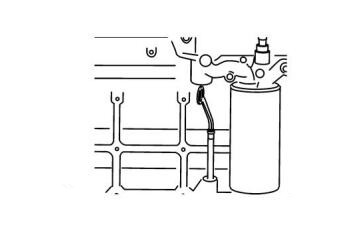
• Check that no oil, fuel or coolant leaks are present.
• Check the air filter pressure drop indicator. Refer to the “Maintenance, Engine, general” chapter:
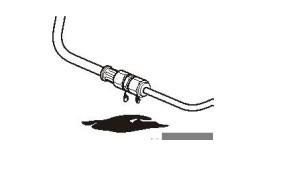
• Check the coolant level and that the radiator is not clogged externally. Refer to the “Maintenance, cooling system” chapter:
WARNING!
Do not open the expansion tank cap when the engine is hot. Steam or hot fluid may spray out.
• Switch on the main electrical power.
IMPORTANT!
Never disconnect power with the main switch(es) when the engine is running. This can damage the alternator.
• Set the engine speed control to idle, and disengage the clutch/gearbox.
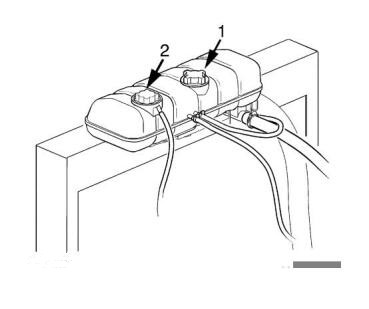
Starting the Engine
The engine control lever must always be in neutral before starting. The EDC 4 system makes sure the engine receives the correct amount of fuel even during cold starts.
Start the engine.
Adapt the preheating period to suit engine temperature if the engine is fitted with preheating.
Starting in Extreme Cold
Certain preparations must be made to enable engine starting in extreme cold, and in some cases to make starting possible at all:
• Use a winter grade fuel (of a well-known make) that is approved for the prevailing temperature. This reduces the risk of paraffin wax precipitation in the fuel system. At extremely low temperatures, we recommend the use of a fuel heater.
• Use a synthetic engine oil of a viscosity recommended for the prevailing temperature to achieve satisfactory lubrication. Refer to Viscosity page 58. Synthetic lubricants are able to handle a wider temperature range than mineral based lubricants.
• Pre-heat the coolant with a separately-installed electric engine heater. In extreme cases, a diesel fired engine heater may be necessary. Ask your Volvo Penta dealer for advice.
• Make sure the cooling system is filled with a glycol mixture. Refer to Maintenance page 44.
• The batteries must be in good condition. Cold weather reduces battery capacity. Increased battery capacity may be necessary.
Never Use Start Spray
WARNING!
Never use start spray or similar agents to start an engine. This may cause an explosion in the inlet manifold. Danger of personal injury.
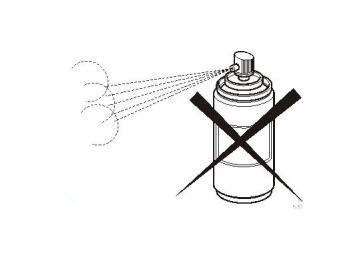
Starting Using Auxiliary Batteries
WARNING!
Explosion hazard. Batteries contain and give off an explosive gas which is highly flammable and explosive. A short circuit, open flame or spark could cause a violent explosion. Ventilate well.
1 Check that the auxiliary batteries are connected (series or parallel) so that the rated voltage corresponds to the engine system voltage.
2 First connect the red (+) jumper cable to the auxiliary battery, then to the flat battery. Then connect the black (-) jumper cable to the auxiliary battery and to a location that is somewhere away from the discharged battery, e.g. the main switch negative terminal or the negative terminal on the starter motor.
3 Start the engine.
WARNING!
Do not touch the connections during the start attempt: Risk of arcing.
Do not bend over any of the batteries either.
4 Remove the cables in the reverse order.
IMPORTANT!
The ordinary cables to the standard batteries must not be loosened under any circumstances.
Operation
Correct operating technique is very important for both fuel economy and engine life. Always let the engine warm up to normal operating temperature before operating at full power. Avoid sudden throttle openings and operation at high engine rpm.
Reading the Instruments
Check all instruments directly after starting, and then regularly during operation.
NOTICE! On engines in continuous operation, the lubrication oil level must be checked at least every 24 hours. Refer to Oil level, checking and topping up.
Alarms
Fault indication
If the EDC 4 system receives abnormal signals from the engine the diagnostics lamp will flash. A fault code for guidance in fault tracing is obtained by pressing the diagnostics button (alternatively, the fault code can be obtained via CAN).
More information about fault codes and fault tracing is found in the “Diagnostic function” chapter.
Effect on engine
The diagnostic function affects the engine in the following ways:
1 The diagnostic function has discovered a minor malfunction which does not damage the engine. Reaction: The engine is not affected. The diagnostic lamp lights up.
2 The diagnosis function has detected a serious malfunction that will not cause the engine immediate damage (such as high coolant temperature):
Reaction: The engine goes into emergency (limp home) mode. The diagnostic lamp lights up.
3 The diagnostic function has discovered a serious malfunction which makes it impossible to control the engine.
4 Reaction: The diagnostic lamp flashes. The engine is shut down.
Maneuvering
Speed control
Avoid sudden, extreme throttle inputs.
Operation at low load
Avoid long-term operation at idle or at low load, since this can lead to increased oil consumption and eventually to oil leakage from the exhaust manifold, since oil will seep past the turbocharger seals and accompany the induction air into the inlet manifold at low turbo pressure.
One consequence of this is carbon build-up on valves, piston crowns, exhaust ports and the exhaust turbine.
At low loads, the combustion temperature may become so low that complete combustion cannot be ensured, resulting in possible fuel dilution of lubricating oil and eventually leakage from the exhaust manifold.
If the following points are done as a complement to normal maintenance, there will be no risk of malfunctions caused by operation at low load.
• Reduce operation at low load to a minimum. If the engine is regularly test-run without load once a week, the duration of this operation should be limited to 5 minutes.
• Run the engine at full load for about 4 hours once a year. In this way carbon deposits in the engine and exhaust system are given the chance to burn up.
Engine Shutdown
During longer breaks in operation, the engine must be warmed up at least once every two weeks. This prevents corrosion in the engine. If you expect the engine to remain unused for two months or more, it must be preserved.
Before Engine Shutdown
Let the engine run for a few minutes without any load before stopping it. This allows engine temperature equalization and prevents boiling once stopped and also allows the turbochargers to cool down. This contributes to long, fault-free service life.
Stop the Engine
• Disengage the clutch (if possible).
• Depending on the instrumentation; hold down the stop button until the engine has stopped or turn the key to the stop position. Release the key once the engine has stopped.
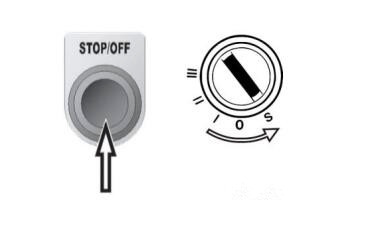
Auxiliary stop
WARNING!
Working with or approaching a running engine is a safety risk. Watch out for rotating components and hot surfaces.
The auxiliary stop (AUX STOP) is located to the right of the steering unit.
NOTICE! The auxiliary stop may under no circumstances be used as the "routine" stop button.
After Engine Shutdown
• Check the engine and engine bay for leakage.
• Turn off the main switches before any long stop page.
• Carry out maintenance in accordance with the maintenance schedule.
Maybe you also like: Volvo sounproof diesel generator.
Copyright © Guangxi Dingbo Generator Set Manufacturing Co., Ltd. All Rights Reserved | Sitemap
Update cookies preferences